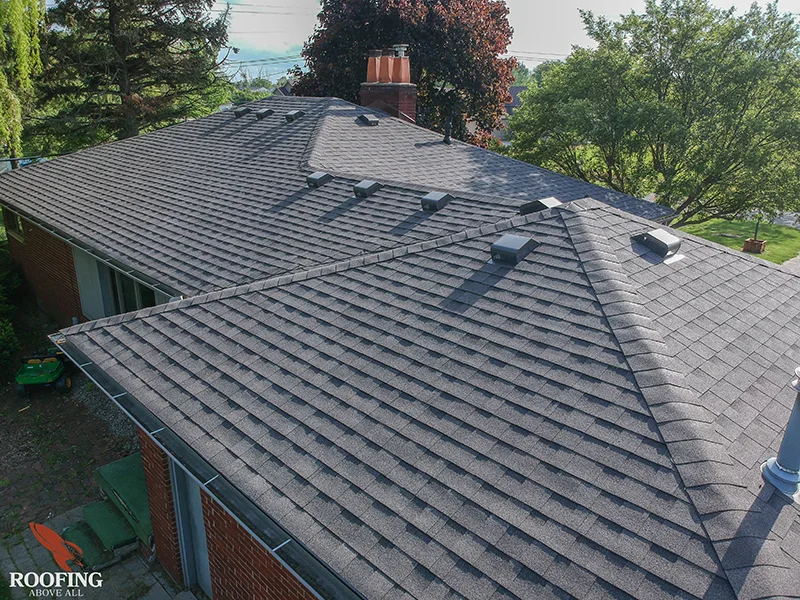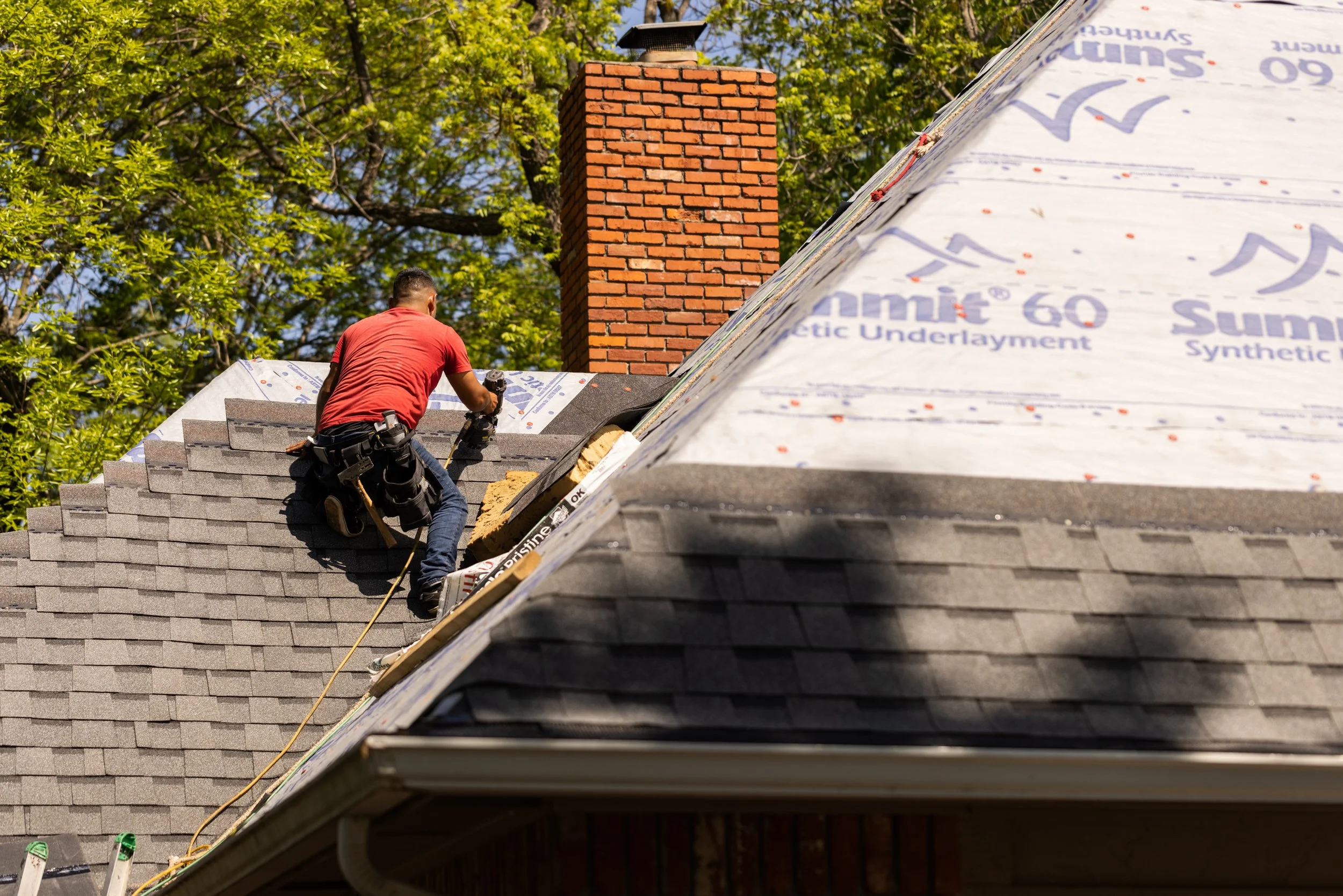A complete overview about pacific mo roofing companies and their quality services.
Wiki Article
A Comprehensive Guide to the Setup Refine for Your New Roof System
The setup procedure for a new roofing system requires cautious factor to consider of various elements. From evaluating the roofing system's structural honesty to selecting appropriate products, each step plays a necessary role in making certain an effective end result. Understanding the subtleties of installment can prevent future issues and enhance resilience. What are the important steps one must comply with to achieve a long-lasting and reputable roof? The response depends on a systematic approach that resolves every crucial aspect.Understanding Different Roof Covering Products
When selecting a roof system, understanding various roof materials is important for making an informed choice. Numerous materials offer unique advantages and downsides, affecting resilience, price, and appearances. Asphalt shingles are popular for their affordability and simplicity of installation, making them a typical choice for property buildings. Metal roof, recognized for its durability and resistance to extreme climate, interest those looking for toughness. Clay and concrete tiles offer a special visual and outstanding insulation yet can be heavier and much more costly. Slate roofing, commemorated for its all-natural charm and phenomenal lifespan, has a tendency to be a costs alternative requiring knowledgeable setup. For environmentally-conscious homeowners, green roof systems, which incorporate vegetation, present sustainable advantages. Understanding these materials enables house owners to straighten their choice with budget, climate considerations, and individual style preferences, inevitably making certain a roof covering option that satisfies their needs properly.Assessing Your Roof's Structural Stability

Reviewing a roofing's structural stability is crucial for ensuring its longevity and safety and security. This procedure includes examining the roof structure for any indicators of weakness, recognizing possible water damage, and identifying the lots capacity to support various roof covering materials. Addressing these elements will certainly aid maintain the general wellness of the roof system.
Inspecting Roof Structure
Prior to setting up a new roof, it is important to extensively check the roof covering framework to verify its architectural integrity. This process includes examining essential elements such as rafters, trusses, and the total framework layout. A certified assessor ought to try to find indicators of wear, warping, or any type of structural shortages that might jeopardize the brand-new roof setup. Furthermore, it is vital to look for correct tons distribution, making specific that the structure can support the weight of the new materials. Any type of recognized concerns must be dealt with prior to proceeding, as they can result in considerable troubles down the line. By prioritizing this inspection, property owners can guarantee a dependable and sturdy roof that will certainly hold up against the examination of time.
Identifying Water Damages
Water damage can substantially affect a roof's structural honesty, making it vital to recognize any indications early in the evaluation procedure. Property owners need to seek staining or stains on ceilings and walls, which might show leaks. Sagging locations in the roofing or ceilings suggest collected moisture that can compromise architectural components. Inspecting the attic is necessary; mold and mildew development and damp insulation are indicators of water breach. In addition, analyzing the roof covering surface for missing tiles, fractures, or rust on metal elements can expose prospective susceptability to water damage. Regular evaluations can assist in very early detection, permitting for timely repair work that preserve the roofing system's honesty and prevent considerable damage. Dealing with these indicators without delay is necessary for keeping a sturdy and risk-free roof system.Evaluating Tons Capability
Examining the load capacity of a roofing system is necessary for assuring its architectural honesty and long life. This assessment includes checking out the products made use of in the roofing system's construction, the underlying structure, and the general style. Elements such as snow buildup, wind lots, and the weight of roof products have to be considered to figure out whether the structure can support added loads. A structural designer can provide beneficial understandings, conducting calculations based on regional building ordinance and ecological problems. Regular evaluations and maintenance likewise play a crucial duty in identifying prospective weak points. By thoroughly evaluating load ability, house owners can stop pricey damages and make specific that their new roof system is durable and risk-free for many years to come.Preparation and Preparing for Setup
Reliable preparation and preparation are necessary steps before mounting a roof - roof repair pacific mo. This involves assessing specific roof requirements and selecting the ideal materials that best fit those needs. An extensive understanding of these components can significantly affect the success and longevity of the roofing taskEvaluating Your Roof Needs
How can one ensure that their roofing job meets both aesthetic and practical requirements? A complete examination of roofing needs is crucial. This entails taking a look at the current roof's condition, determining any kind of damages, and figuring out architectural stability. Homeowners ought to consider their climate, as climate condition significantly affect roofing product options and toughness. Additionally, reviewing building style and community appearances is vital for keeping property value and charm. Comprehending personal choices and spending plan constraints additional aids in making informed decisions. Consulting with roof specialists can provide valuable insights and suggestions customized to details needs. By carefully assessing these elements, property owners can guarantee their roof job lines up with their special needs and boosts their property's general appearance.
Selecting the Right Materials
When selecting materials for a roof covering task, it is necessary to take into consideration both performance and looks to ensure a successful installation. Homeowners should think about the climate of their area, as particular products perform much better under certain climate condition. For instance, metal roofings provide sturdiness in locations susceptible to hefty snowfall, while asphalt shingles may be more cost-efficient for milder climates. In addition, the style of the home plays a considerable role; materials must complement the building layout to boost aesthetic allure. Sustainability is another factor; eco-friendly choices like solar ceramic tiles or reclaimed timber can minimize ecological impact. Eventually, choosing the ideal products entails stabilizing these aspects to protect a durable and visually appealing roof system.Safety And Security Safety Measures Throughout Installation
Ensuring safety during roofing system installation requires thorough focus to detail and adherence to established protocols. Most importantly, employees must wear proper individual safety devices (PPE), including headgears, gloves, and non-slip footwear, to lessen injury threats. Scaffolding and ladders have to be safely placed and maintained to supply stable job surfaces. It is necessary to evaluate the roofing framework for weak points or damages before starting work, as this can avoid accidents later.Furthermore, installers need to be educated in autumn security strategies, including using harnesses and guardrails. Weather also play a considerable function; job ought to be held off throughout high winds, rain, or tornados. In addition, all devices and materials need to be organized and protected to avoid tripping dangers. By focusing on these safety and security preventative measures, the risk of mishaps can be especially lowered, guaranteeing a much safer working setting for all entailed in the roofing installment procedure.
Step-by-Step Installation Refine
A successful roof setup entails a series of meticulously planned steps that assure both effectiveness and high quality. At first, the old roofing material should be gotten rid of, making particular the underlying structure is intact. Next, any kind of required repairs to the roof covering deck are carried out, reinforcing its stability. Following this, a wetness obstacle is set up to safeguard versus water seepage. The selection of roofing material, such as tiles or metal panels, is then outlined, starting from the eaves and advancing upwards. Each piece is protected diligently to hold up against weather. Ventilation systems are incorporated to promote air flow and avoid moisture build-up. Flashing is set up around vents and chimneys to more safeguard versus leakages. Finally, the installation is examined for conformity with local building ordinance and manufacturer requirements. This comprehensive technique guarantees a long lasting and reputable roof that fulfills house owner expectations.Completing Touches and Assessments

As soon as the setup of all components is complete, a complete assessment follows. This includes monitoring for correct placement, protected fastening, and appropriate sealing of joints. Examiners additionally evaluate air flow systems to ensure peak airflow and wetness monitoring.
In addition, any type of debris or leftover materials from the setup have to be cleared from the roof covering and bordering area. By thoroughly addressing these details, homeowners can assure that their new roof is not only functional but likewise visually enticing, establishing the stage for long-lasting performance and longevity.
Upkeep Tips for Your New Roof
While many homeowners may overlook the value of normal roofing upkeep, developing a regimen can significantly prolong the lifespan and efficiency of a new roof system. Regular assessments ought to be carried out a minimum of twice a year, preferably in spring and autumn, to recognize any type of potential concerns early. House owners need to inspect for loosened or absent tiles, indicators of wear, and particles build-up in seamless gutters and valleys.Cleaning up the roofing surface area and rain gutters is important to avoid water damages and mold growth. Additionally, trimming overhanging branches can lessen wear and tear triggered by dropping particles. It is additionally a good idea to check indoor ceilings for indications of leaks or water discolorations, which could suggest roofing issues.
Involving a professional for yearly inspections guarantees that any type of underlying issues are dealt with without delay, protecting the stability of the roofing system and giving peace of mind for house owners.

Regularly Asked Questions
For how long Does the Roofing Installment Process Generally Take?
The roofing setup process usually takes one to three days, relying on the task's size and intricacy. Variables such as climate conditions and the kind of roof covering material can also affect the overall timeline.What Allows Are Required for Roof Covering Installment?
The needed permits for roofing installation commonly include structure permits, architectural authorizations, and, in some areas, electrical or plumbing authorizations. Regulations might differ based upon neighborhood codes, demanding examination with neighborhood authorities for specific demands.Can I Stay At Home During the Setup?
Home owners can remain throughout roofing installation, but it might be bothersome because of sound and disruptions. Professionals suggest avoiding of workspace for safety and to enable the team to execute their tasks successfully.Will My Insurance Coverage Cover the Roof Covering Installment Costs?
Insurance insurance coverage for roof installation costs differs based upon private policies and conditions. House owners should consult top rated roofing companies near me their insurance coverage supplier to establish eligibility for protection, including elements like damage seriousness and policy terms concerning roofing substitute.What Occurs if It Drizzles Throughout Installation?
If it rains during setup, employees may stop development to avoid damage to products and ensure security. Rain can likewise delay completion, needing added time for drying and prospective re-evaluation of the roof job.The setup procedure for a new roofing system calls for mindful consideration of different aspects. When selecting a roofing system, comprehending different roof products is crucial for making a notified choice. When choosing products for a roofing project, it is crucial to take into account both functionality and visual appeals to guarantee a successful installment. Ensuring safety and security during roofing system setup needs careful attention to detail and adherence to developed methods. An effective roof system installation involves a series of meticulously planned steps that assure both performance and quality.
Report this wiki page